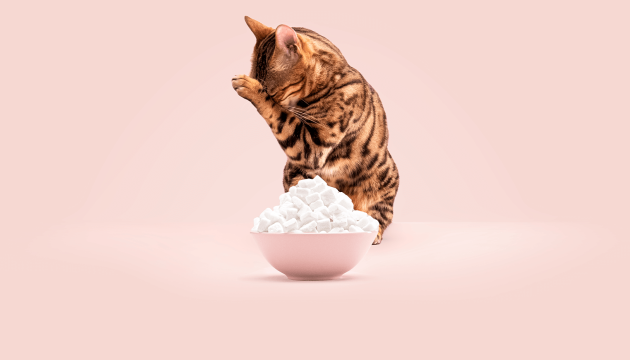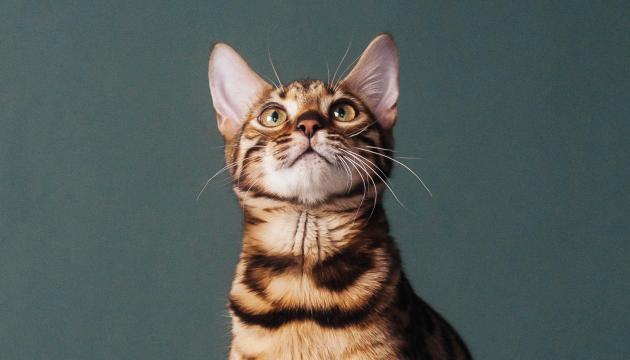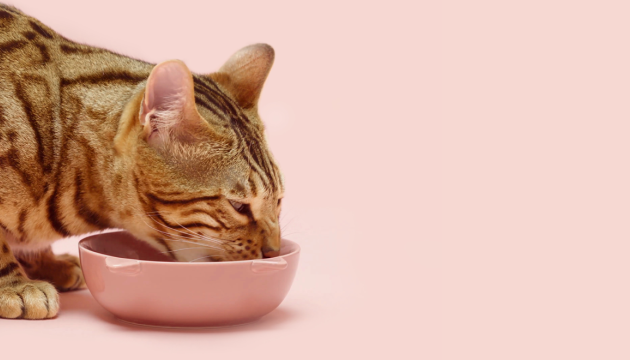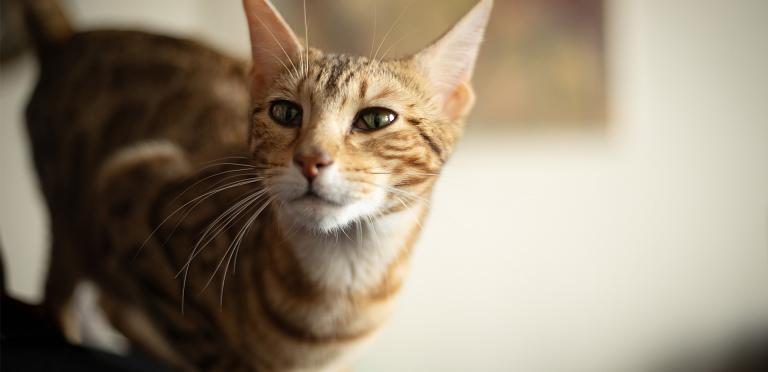

Natural cat food and natural diet for cats
Natural cat food consists mainly of animal-based ingredients, as cats are obligate carnivores. Read this article to find out what natural cat food means and what a natural diet for cats entails. Also explore the basics of feeding cats.
cat is a predator
When softly purring in its owner’s lap, a cat's senses may heighten in an instant if a bird descends onto a window or a spider scuttles across the floor. The movement invokes the cat’s primitive predatory instincts, tempting it to go on a hunt.
Cats have retained the efficient hunting skills of their wild ancestors. When a pet cat is allowed to roam in the wild, it may catch a mouse, a bird, a small rabbit or even a lizard, a frog, or a dragonfly.
If provided the opportunity, the cat’s strong hunting instincts drive it to look for prey even when fully fed. Therefore, cats will sometimes catch mice or small birds only to play with them and eventually leave them uneaten.
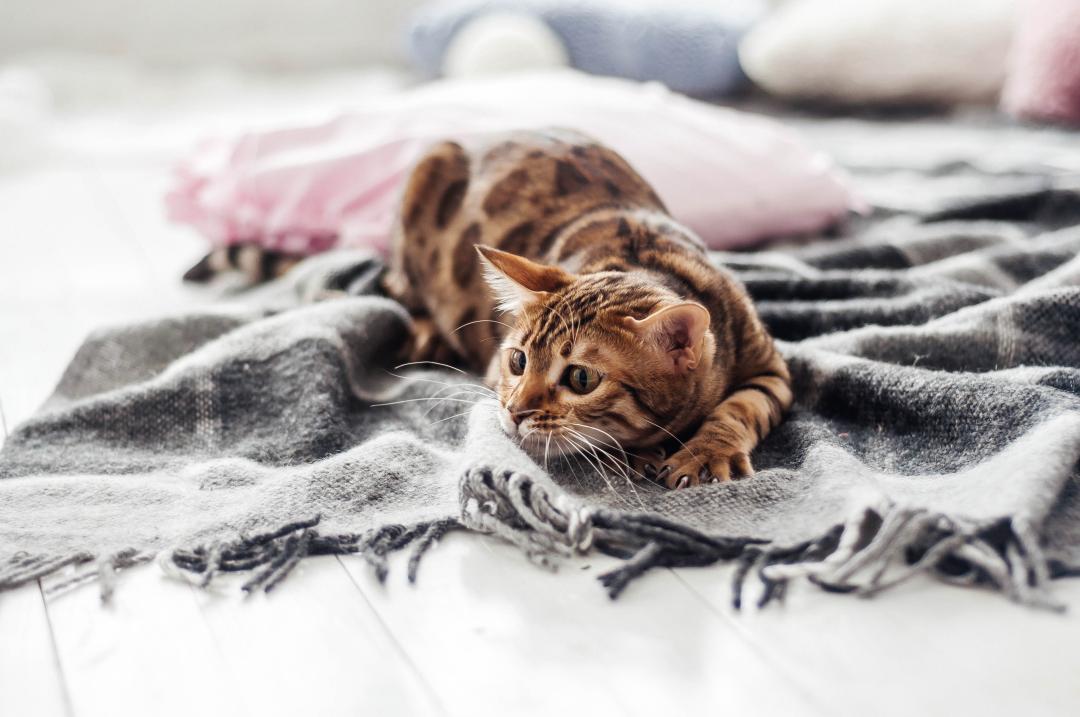
Cats are obligate carnivores
Natural cat food contains meat. As a predator, a cat's body is specifically adapted to take full benefit of a meat-based diet. One mouse provides approximately 30 kilocalories, which is about 12 percent of the daily energy needs of an active cat. A cat's natural eating pattern may consist of more than 10 small meals a day to meet its energy requirement.
The meat of small prey animals contains lots of protein, providing the cat with amino acids that are vital nutrients to their well-being. Taurine is a particularly important amino acid. Cats need it to maintain their eyesight and the functionality of their nervous system and the heart. While mammals and many insects contain taurine, plants have it very little or none.
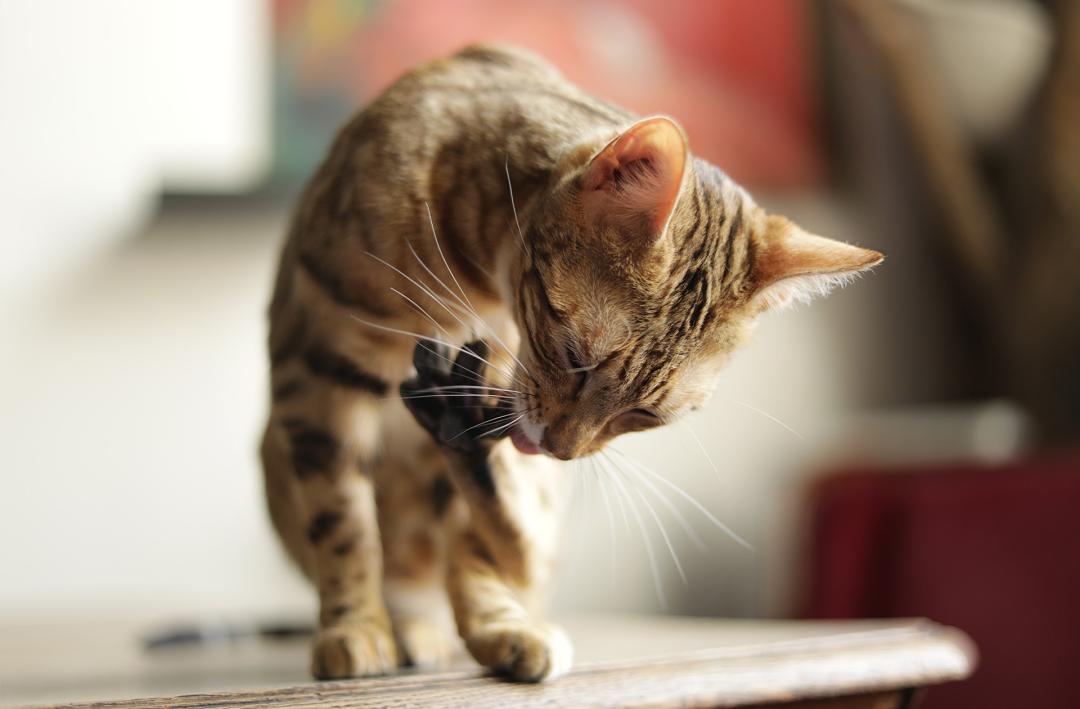
In addition to protein, cats use the fat in their prey for energy. Furthermore, intestines and bones provide cats with vitamins and minerals. The stomach contents of plant-eating rodents give cats enough fibre, since plants in general do not provide much nutritional value for them. However, many cats like to eat grass. It may help with digestion and with cleaning their intestines.
Cats have a naturally weak sense of thirst, making it important for them to get most of their hydration from their food. The purest natural cat food, a mouse, contains about 70% water. Read more about the cat’s water requirements and drinking habits.
Natural cat food off the shelf
PrimaCat cat food recipes are developed for the natural needs of a cat:
- The fillets in PrimaCat Classic wet food consist of 88% meat and other animal-based proteins, some fibre and high-quality fats. The ratio of fillets and gravy or jelly in Classic wet foods is 50/50 which is optimal for complete nutrition.
- All PrimaCat dry foods contain 45–64% meat or fish, depending on the product, and 90% of the protein in dry foods is always animal-based.
- To maintain its shape, kibble requires starch as binder. The plant-based ingredients of PrimaCat products have been carefully selected and cooked well to help cats digest them as easily as possible. In addition, our selection includes plenty of 100% grain-free alternatives, including all our Classic wet foods.
- Unlike many other cat food products on the market, PrimaCat products do not include any added sugar. Sugar has nothing to do with natural cat food and it has no nutritional value for cats.
- In the wild, the ability to maintain sufficient intake of nutrients depends on the availability of prey and the cat’s hunting fitness and skills. By serving your cat PrimaCat complete food, it can enjoy a balanced natural cat food that includes all necessary vitamins, minerals and amino acids.

Cats are versatile eaters
Owners of fussy cats may find it hard to believe but cats are actually generalist predators. This means that cats can adapt to the nutrition provided by their habitat and consume various sources of protein. On the other hand, wild cats have their preferences and often rather hunt for small rodents and rabbits than birds or insects. Hence, natural cat food is diverse.
PrimaCat products come in many flavours for various tastes. With Classic wet foods you can choose either gravy or jelly – whichever your cat likes the most. With our delicious supplementary foods, PrimaCat Fillets and Soups, you can add even more variety to your cat's diet.

Need help with feeding your picky cat? See our handy tips.
Sources
- Bradshaw, John W. S. The evolutionary basis for the feeding behavior of domestic dogs (Canis familiaris) and cats (Felis catus) (2006) The Journal of Nutrition 136(7): 1927S–1931S.
- Hand, Michael S., Thatcher, Craig D., Remillard, Rebecca L., Roudebush, Phillip & Novotny, Bruce J. [ed.] (2010) Small Animal Clinical Nutrition. 5. edition. Topeka, Kansas: Mark Morris Institute.
- Lanszki, József, Kletečki, Eduard, Trócsányi, Balázs, Mužinić, Jasmina, Széles, Gabriella L. & Purger, Jenő J. (2016) Feeding habits of house and feral cats (Felis catus) on small Adriatic islands (Croatia). North-Western Journal of Zoology 12(2): 336–348.
- McCusker, Sarah, Buff, Preston R., Yu, Zengshou & Fascetti, Andrea J. (2014) Amino acid content of selected plant, algae and insect species: a search for alternative protein sources for use in pet foods. Journal of Nutritional Science 3(e39).
- Plantinga, Esther A., Bosch, Guido & Hendriks, Wouter H. (2011) Estimation of the dietary nutrient profile of free-roaming feral cats: possible implications for nutrition of domestic cats. British Journal of Nutrition 106(S1): S35–S48.
